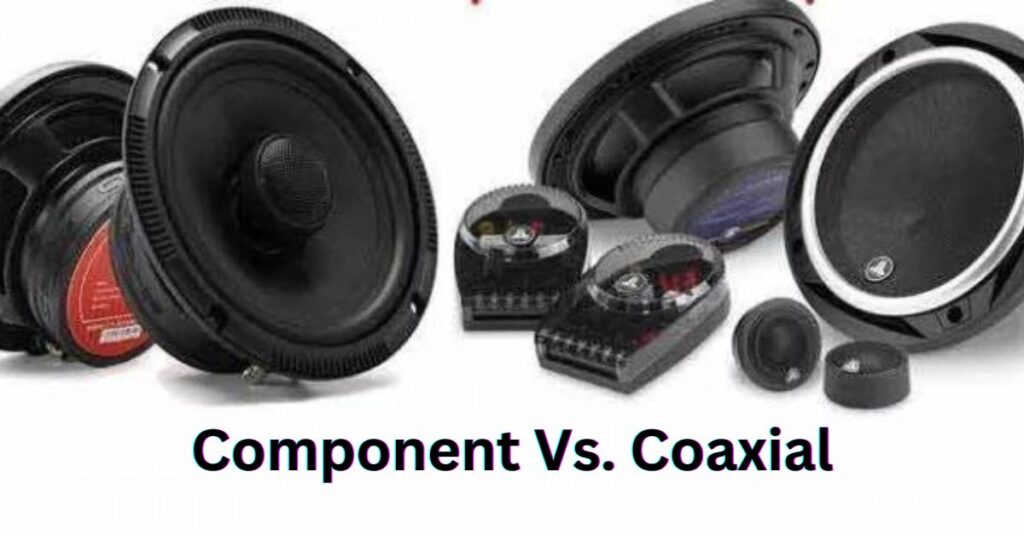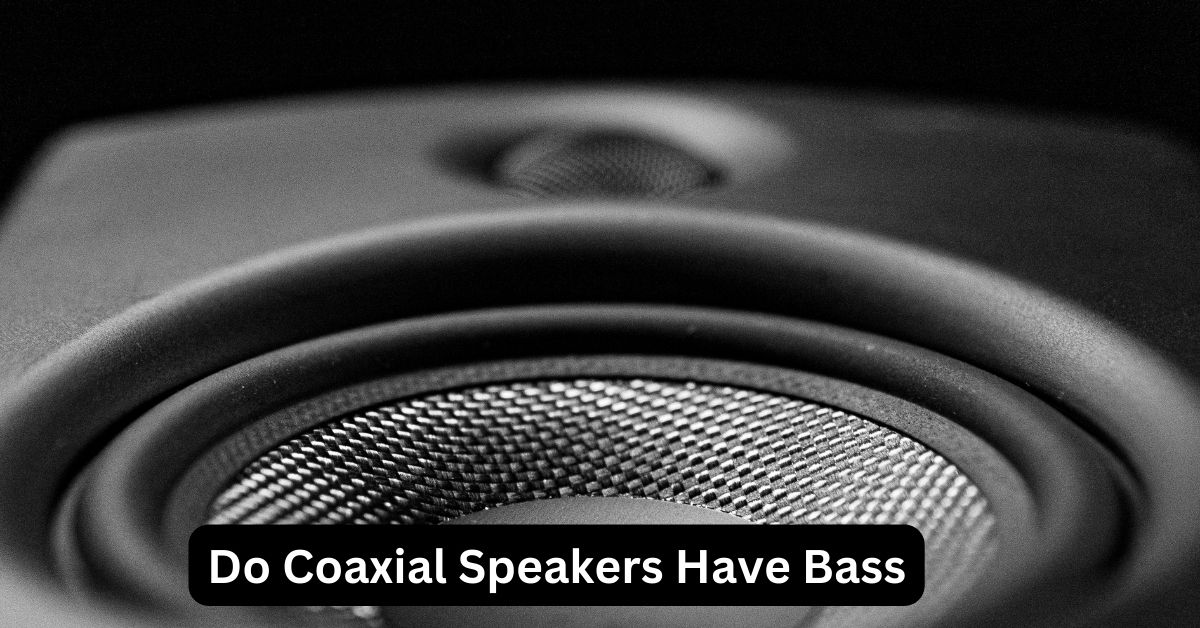Coaxial speakers are popular with many audio enthusiasts due to their convenient design and easy installation. These speakers feature a driver mounted within another driver, allowing for both high and low-frequency sounds to be produced from a single unit. While coaxial speakers can make a wide range of frequencies, one common question is whether or not they have bass.
Do Coaxial Speakers Have Bass?
The answer is yes, coaxial speakers can produce bass frequencies, but the amount and quality of bass will depend on several factors.

One crucial factor is the size of the speaker. Generally speaking, more prominent speakers can produce more bass than smaller ones. This is because more prominent speakers can move more air and have more sound pressure, which is necessary for low-frequency sounds.
Another factor that affects the bass output of a coaxial speaker is the speaker’s design. Coaxial speakers with a dedicated woofer and tweeter typically produce more bass than those with a single driver. This is because the dedicated woofer is optimized for making low-frequency sounds, while the tweeter is optimized for making high-frequency sounds.
Size and design of the speaker:
In addition to the size and design of the speaker, the materials used in its construction can also impact the bass output. For example, speakers with more giant cones of polypropylene or Kevlar will typically produce more bass than smaller cones of less rigid materials like paper or cloth. The surrounding material, the ring that connects the cone to the speaker frame, can also affect the bass output. Surrounds made of rubber or foam are typically more effective at producing bass than cloth ones.

However, it’s important to note that coaxial speakers are not designed to produce intense bass frequencies. A separate subwoofer or dedicated bass speaker is often necessary for low-frequency sounds, such as those found in electronic dance music or hip-hop. This is because subwoofers are explicitly designed to produce low-frequency sounds and are typically much more significant than coaxial speakers, allowing them to move more air and have more sound pressure.
That being said, coaxial speakers can still produce a satisfying amount of bass in many types of music. For example, in acoustic or classical music, there is often less emphasis on deep bass sounds, so a coaxial speaker may be sufficient to produce a full and balanced sound. Additionally, a coaxial speaker may be a practical choice in limited space, such as in a car or a small room, since it can produce a wide range of frequencies without taking up too much space.
Component Vs. Coaxial:

Component and coaxial speakers are car audio systems but differ in design and performance.
Component speakers are a more advanced speaker system that separates the tweeter and woofer into individual components. The tweeter is usually mounted on the dashboard or A-pillar, while the woofer is installed in the door or kick panel. This allows for better sound staging and imaging and greater flexibility in adjusting the sound output.
Coaxial speakers, on the other hand, are designed to combine the tweeter and woofer into a single unit, with the tweeter mounted in the center of the woofer. This design is more compact and easier to install, but it can be less effective at reproducing high-frequency sounds due to the positioning of the tweeter.
In terms of sound quality, component speakers generally provide a more accurate and detailed sound, while coaxial speakers are better suited for simple sound reproduction. However, this can vary depending on the speakers’ quality and each system’s design features.
The choice between component and coaxial speakers comes from personal preference and factors such as budget and installation requirements.
Here are some additional details about component and coaxial speakers:
Component Speakers:
- As mentioned, component speakers separate the tweeter and woofer into separate components. This allows for greater flexibility in positioning the speakers, which can improve sound staging and imaging.
- Component speakers typically have higher-quality materials and construction, which can result in better sound quality.
- Because of their more advanced design, component speakers are generally more expensive than coaxial speakers.
- Component speaker systems often require external crossovers to ensure that the proper frequencies are sent to each component. This can add complexity to the installation process.
Coaxial Speakers:
- Coaxial speakers are designed to be compact and easy to install. They can usually be mounted directly in the factory speaker locations without modification.
- Coaxial speakers are generally less expensive than component speakers, which makes them a popular choice for those on a budget.
- Because the tweeter is mounted in the woofer’s center, coaxial speakers can have a limited frequency range, particularly in the high frequencies.
- Some coaxial speakers have additional features, such as pivoting tweeters or adjustable tweeter levels, that can help improve sound quality.
When choosing between component and coaxial speakers, it’s essential to consider your personal preferences and the specific requirements of your audio car system. Some factors to consider might include the size and shape of your car’s speaker locations, your desired sound quality, and your budget. Additionally, it’s crucial to ensure that the speakers you choose are compatible with your car’s amplifier and head unit.
CONCLUSION:
In conclusion, coaxial speakers can produce bass. Still, the amount and quality of bass produced will depend on several factors, including the size and design of the speaker, as well as the materials used in its construction.
While coaxial speakers are not designed to produce intense bass frequencies, they can still have a satisfying amount of bass in many types of music. They can be a practical choice in situations where space is limited. However, if you’re looking for a speaker that can produce very low-frequency bass, you may want to consider a separate subwoofer or dedicated bass speaker.
